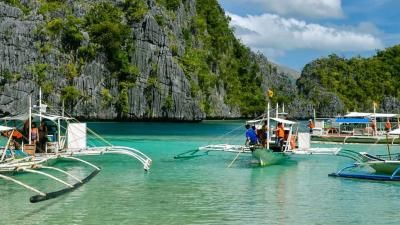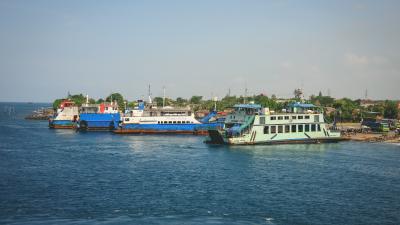
Transforming ferry safety in the Philippines
Our grant has enabled experts to undertake a study to identify which measures have been most helpful in strengthening safety in its domestic ferry industry.
This page is approximately a 4 minute read
This page was published on

Anish Hebbar , Associate Professor, World Maritime University
Unlike ferry travel in developed countries and international voyages, ferry safety is almost an endemic issue in the less developed regions of the world. Several common pressing safety issues with domestic ferries can be mentioned that frequently result in many deaths and injuries in developing countries.
There is a general lack of competency standards for the domestic ferry sector, especially for smaller tonnage vessels, as also the means for acquiring such competency. Regulatory frameworks for vessels are generally found to be inadequate or unsuitable and safety oversight can be insufficient to almost non-existent.
A structured mechanism for learning from accidents and incidents is usually lacking. Safety investigations and qualified accident investigators are lacking. Means for obtaining casualty data and database of marine casualties can be inadequate to almost non-existent.
Overcrowding and overloading is a persistent challenge, especially in developing regions, due to a multiplicity of factors including inadequate regulations, insufficient resources for enforcement and economic pressures on operators.
Aging fleets, coupled with non-availability of spares and poor vessel maintenance coupled with a lack of adequate safety investments by shipowners and operators can result in frequent mechanical failures and jeopardise human safety. Many ferry services operate without adequate life-saving equipment or emergency response plans. Limited search and rescue capabilities can further aggravate the impact in the event of any distress situation.
In some developing countries, large numbers of domestic ferries of traditional construction continue to serve as a major means of transportation and sometimes exceed the number and total carrying capacity of modern vessels in these countries. However, I am quite optimistic and buoyed by the growing interest of industry stakeholders and governments around the world in enhancing the safety of their domestic ferry fleet.
Given the pressing safety issues highlighted here, mainstreaming of ferry safety and getting it very high on the political agenda in high-risk countries alongside an extensive and sustained campaign for safety awareness merits the highest priority.
With unwavering political will as driver, strong safety regulatory and policy frameworks coupled with suitable and adequate infrastructure and resources for enforcing compliance is urgently needed for enhancing safety of domestic ferries.
Inculcating and nurturing society-wide safety culture until it gains a firm footing and inherent momentum in the domestic ferry sector with targeted safety interventions is a critical imperative.
Charting pathways for modernisation and infusing technological and digital transformation in the sector is also highly desirable.
Shipboard fire-protection arrangements and fire-fighting systems; life-saving appliances and equipment; and, radio and satellite communication systems, where feasible, are imperative for safety of life at sea on domestic ferries. MRCCs equipped with GMDSS are an essential component of the maritime safety system.
Online and App-based ticketing requires minimal investments and together with shoreside implementation of passenger access control systems can effectively prevent overcrowding while enforcing capacity limits.
Real-time data on vessel stability, weather conditions and navigation hazards can further prevent accidents by alerting crews to risks like overloading or approaching storms.
The regions with high-risk countries for ferry safety continue to receive the highest attention in terms of safety interventions through projects.
Support for implementation of action plans inspired by the UN Sustainable Development Goals pivoted on a key pillar of partnership for the safety goals adopted by the Maritime Organization for West and Central Africa (MOWCA) and Pacific Community (SPC) and calls for similar actions via adoption of best practices in the ASEAN region presents the greatest potential for safety transformation in the domestic ferry sector.
A training manual, self-paced e-learning programme and an online best practices forum for domestic ferry safety are currently under development jointly by IMO, IMLI and WMU with funding from the Foundation. I am truly excited about their potential impact and the immense possibilities for following up with safety enhancement programmes anchored in the developed content.
